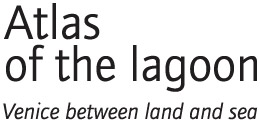
|
|
Oligocene:
geological epoch from between about 35 and 24 million years ago. Oligohaline: waters with very low salinity. Organic halides: organic compounds containing halogens (generally chlorine, bromine, fluorine) mainly produced in industrial processes. This category includes substances whose toxicity levels are among the highest known, such as 2, 3, 7, 8 TCDD (TetraChloroDibenzoDioxin, the dioxin released in the Seveso accident of July 10th 1976), as well as substances of more moderate toxicity. Organic matter, organic substance: all material that comes from, or is produced by, living organisms in various stages of decomposition. Cf. Plate 11. Orthophotography: technology for the production of orthophotomaps, which uses equipment and procedures that are able to remove distortion (e.g., from the camera angle), thus equalizing the distances represented on the image. Parental investment: all the actions performed by one generation (“parents”) to increase the likelihood of survival of the following generation (“offspring”). Patch: unit of landscape. Cf. Plate 94. Peat: material of vegetal origin, largely organic, which is formed in basins of varying nature and size, or in very wet environments, as a result of the incomplete transformation of plant residues in saturated (and consequently anaerobic) conditions – see anaerobic. Natural environments where peat normally accumulates are called peat bogs. Pedogenesis: the process by which soil is created. The weathering of rocks produces soluble substances and/or detritus of varying dimensions, which may remain in a place or undergo transport of various kinds. This represents the “parent material” from which, via pedogenesis, soil is formed. Pedogenesis may be distinguished into “zonal processes”, i.e., linked to well-defined climatic and vegetational areas, and “azonal processes”, determined by conditions such as topography or the type of rock. Biological activity, as well as accelerating physical decay, plays a fundamental role in that it ensures the mineralisation of organic matter, making it available for use by autotrophic organisms. Pedology: the study of the nature of the soil, based on its geological, agronomic, chemical and physical characteristics. Pelagic: of, concerning the open sea. Phanerogams: (also called spermatophytes): plants that reproduce by means of seeds and have leaves, stem and flowers; they include the Gymnosperms and the Angiosperms. There are also phanerogams that are adapted to life in marine and transitional environments, known as seagrasses. In the Lagoon of Venice they include: Zostera marina, Z. noltii, Cymodocea nodosa and Ruppia marittima. Cf. Plates 60-63. Photo-interpretation, aero-photo-interpretation: survey of geological, geobotanical, geomorphological and environmental parameters via aerial photos. Photosynthesis: series of chemical reactions which exploit solar energy to create carbohydrates from carbon dioxide and water. Phytobenthos: vegetal component of benthos. Phytocoenosis: the plant community, i.e., all the vegetal species that grow in a given area; vegetal component of biocoenosis. Phytoplankton: vegetal component of plankton. Phytopurification: system for the treatment of waste waters based mainly on biological processes. Phytopurification plants are made up of wet environments reproduced artificially in basins with an impermeable bed, through which flow waste waters, at varying rates, channelled by a collector. These systems have plant species that are typical of wetlands (hygrophile), rooted in a growth substrate or floating. Phytosociology: the study of plant communities on the basis of their floristic composition and the quantitative relations between the various species present. The basic unit of phytosociology is the “plant association”. Pixel: abbreviation of “picture element”. The smallest square element making up a bitmap image (like a piece in a mosaic). The greater the number of pixels, the greater the definition of the image. Plankton: all the aquatic organisms transported by the current. Cf. Plate 54. Planiziale: di pianura. Pleistocene: geological epoch from between about 1.8 million and 10,000 years ago. Pliocene: geological epoch from between about 5.3 and 1.75 million years ago. Polychlorobiphenyls, PCBs: series of 209 bicyclic aromatic compounds made up of biphenyl molecules with varying numbers of chlorine atoms. First created at the beginning of the last century, they were produced commercially from 1930 onwards, used in dielectric fluids for electrical transformers, heat-exchange fluids, lubricants etc.). Today they are mostly proscribed because of their toxicity. They can be molecules with coplanar or non-coplanar atoms. Only coplanar PCBs have chemico-physical and toxicological features that are comparable to dioxins and furans: these are referred to as dioxin-like PCBs. Polycyclic Aromatic Hydrocarbons (PAHs): large class of chemical compounds containing carbon and hydrogen, whose molecular structure includes one or more rings of carbon atoms with delocalised electrons. Having a distinctive smell, PAHs are present in nature in crude oil, from which they are distilled into various fractions (petrol, fuel oil etc.). Some PAHs are toxic (e.g. benzene). Preferential species: species that prefers a certain biotope. They may also be found in other biotopes, though they may less abundant: in these cases they become simply accompanying species. Psammophile: of a plant or animal species, preferring sandy soils. |